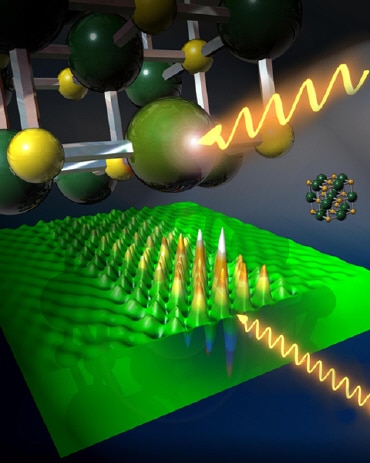The research was published in the journal Nature Physics * The dark exciton is a fundamental excitation of a semiconductor that does not react to light; The discovery may be an important application in the way of quantum information processing

The Technion researchers found for the first time a way to reach the dark exciton with the help of light. Their work, which was published in the prestigious scientific journal Nature Physics, may have applications that will be another step on the way to calculating and processing quantum information.
Professor David Gershoni and doctoral students Elon Poam and Yaron Kudriano from the Faculty of Physics explain that the dark exciton is an excited state of a semiconductor that does not react to light. "When electronic excitation occurs in a semiconductor, an electron (which has a negative electrical charge) moves from the valence band, which is low in energy and full of electrons, to the conduction band, which is high in energy and empty of electrons. The missing electron in the valence band is called a "hole" and its electrical charge is positive. Between the electron and the hole they say, there is an electric attraction that binds them. An associated electron and hole is called an exciton. The electron has a quantum degree of freedom that is likened to a rotation around its axis called "spin". If the spin of the hole, like its charge, is opposite in direction to the spin of the electron, the electron can return to the valence band while emitting its excess energy in the form of light ("photon") and is called a bright exciton. But if the spin of the hole is parallel in its direction to the spin of the electron, such a repetition is prohibited, no light emission is possible and the exciton is called a dark exciton. When light emission is allowed it occurs very quickly, so the bright exciton lives for no more than a billionth of a second. However, when the process is forbidden the lifetime of the (dark) exciton is almost a thousand times longer.
The total spin of the dark exciton is determined by the sum of the spins of the electron and the hole and can be directed up (a logical one of an information bit) or down (a logical zero). But in quantum theory the true spin state is described by a combination of these two states. Because of this, much more information is stored in the spin state than in a classical information bit and it can be used as a quantum information bit or "qubit". The future technology called quantum information processing, including covalent computing, is based on the ability to apply qubits.
Technion researchers have found a new way to "write" the spin state of the dark exciton and "read" it using light. They were able to prepare a dark exciton in a semiconductor quantum dot in a known and specific spin state and then also follow the temporal evolution of the spin state. "We measured for the first time the rate at which the spin of the dark exciton oscillates between its two eigenstates," they say.
The discovery of the Technion researchers has great scientific value due to the originality of the research. The discovery may also be an applied milestone, since the dark exciton due to its long lifetime, its electrical neutrality, and its insensitivity to environmental disturbances may have advantages for use as a qubit for the purposes of quantum information processing and storage. The use of semiconductor quantum dots is particularly attractive for these needs, since semiconductors and nanoscale structures within them are particularly suitable for the information processing, communication and computing technologies, which are completely based on them.

3 תגובות
Glad I helped, I hope the issue will be clarified for you more than in the usual press!
Regarding the current article, it is amazing how much information about the structure of the material is not known to the general public.. All this happens in every material? It sounds like a rather complex matter of all the activity of the electrons. It's good that they know what to do and when and don't trust us to calculate the various transitions for them!
In therapy. Thanks
http://www.nasa.gov/mission_pages/GLAST/news/new-structure.html Isn't it worth an article for you?